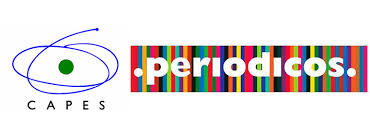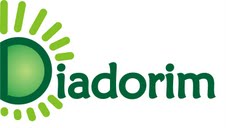APLICAÇÃO DE UM DESCRITOR INVARIANTE DA TRANSFERÊNCIA DE CALOR CONJUGADA POR CONVECÇÃO FORÇADA-CONDUÇÃO NO RESFRIAMENTO DE AQUECEDORES 3D PROTUBERANTES EM CANAIS
DOI:
https://doi.org/10.26512/ripe.v2i12.21353Keywords:
Descritor invariante. Coeficientes de influência conjugados. Convecção forçada. Condução. Predição de temperaturas.Abstract
Neste trabalho foi realizado um estudo numérico da aplicação de um descritor invariante da transferência de calor conjugada por convecção forçada-condução no resfriamento de três aquecedores 3D protuberantes montados em um substrato condutivo em um canal retangular horizontal com escoamento laminar. As temperaturas médias dos aquecedores foram relacionadas, independente da potência dissipada em cada um, através de uma matriz G+ com coeficientes de influência conjugados g+. O aumento da temperatura de cada aquecedor no canal foi quantificado de tal forma que as contribuições devido ao autoaquecimento e à esteira térmica fossem claramente identificadas. Para uma dada geometria, campo de escoamento, propriedades termofísicas do fluido e dos sólidos, estes coeficientes são adimensionais e invariantes com a taxa de dissipação de calor na configuração dos aquecedores. Os resultados foram obtidos numericamente por meio do software ANSYS/ FluentTM 15.0, para números de Reynolds na faixa de 500 a 2.000 e altura dos aquecedores protuberantes entre 10% e 35% em relação à altura total do canal. Alguns exemplos foram apresentados demonstrando os benefícios da aplicação dos coeficientes de influência conjugados na predição de temperaturas do processo de resfriamento conjugado de aquecedores discretos em canais.
Downloads
References
Antonini Alves, T., 2010. Resfriamento Conjugado de Aquecedores Discretos em Canais. Tese de Doutorado em Engenharia Mecânica, Universidade Estadual de Campinas/Campinas.
Antonini Alves, T., & Altemani, C. A. C., 2012. An invariant descriptor for heaters temperature prediction in conjugate cooling. International Journal of Thermal Sciences, vol. 58, pp. 92”“101.
Antonini Alves, T., Santos, P. H. D., & Barbur, M. A., 2015. An invariant descriptor for conjugate forced convection-conduction cooling of 3D protruding heaters in channel flow. Frontiers of Mechanical Engineering, vol. 10, pp. 263-276.
Anderson, A. M., & Moffat, R. J., 1992a. The adiabatic heat transfer coefficient and the superposition kernel function: part 1 ”“ data for arrays of flatpacks for different flow conditions. Journal of Electronic Packaging, vol. 114, pp.14-21.
Anderson, A. M., & Moffat, R. J., 1992b. The adiabatic heat transfer coefficient and the superposition kernel function: part 2 ”“ modeling flatpack data as a function of channel turbulence. Journal of Electronic Packaging, vol. 114, pp. 22-28.
ANSYS/FluentTM. Tutorial, 2011: Solving a Conjugate Heat Transfer Problem using ANSYS/FluentTM. pp. 1-30.
Bar-Cohen, A., Watwe, A. A., & Prasher, R. S., 2003. Heat transfer in electronic equipment. In Bejan, A., & Kraus, A. D., eds, Heat transfer handbook, pp.947-1027. John Wiley & Sons. chap.13.
Bergman, T. L., Lavine, A. S., Incropera, F. P., & Dewitt, D. P. Fundamentals of heat and mass transfer, New Jersey, USA: John Wiley & Sons., 1080 p., 2014.
Davalath, J., & Bayazitoglu, Y., 1987. Forced convection cooling across rectangular blocks. Journal of Heat Transfer, vol. 109, pp. 321”“328.
Grigull, U. Heat Conduction, New York, USA: Hemisphere Publishing Corporation, 187p., 1987.
Hacker, J. M., & Eaton, J. K., Heat transfer measurements in a backward-facing step flow with arbitrary wall temperature variations. Stanford University, Stanford, USA: Thermosciences Division Research Report MD”“71, 1995.
Kays, W. M., Crawford, M. E., & Weigand, B. Convective heat and mass transfer, New York, USA: McGraw-Hill, 546p, 2005.
Morris, G. K., & Garimella, S. V., 1996. Thermal wake downstream of a three-dimensional obstacle. Experimental Thermal Fluid Science, vol.12, pp. 65-74.
Patankar, S. V., 1980. Numerical heat transfer and fluid flow. Hemisphere Publishing Corporation.
Zeng, Y., & Vafai, K., 2009. An investigation of convective cooling of an array of channel-mounted obstacles. Numerical Heat Transfer, Part A, vol. 55, pp. 967”“982.
Downloads
Published
How to Cite
Issue
Section
License
Given the public access policy of the journal, the use of the published texts is free, with the obligation of recognizing the original authorship and the first publication in this journal. The authors of the published contributions are entirely and exclusively responsible for their contents.
1. The authors authorize the publication of the article in this journal.
2. The authors guarantee that the contribution is original, and take full responsibility for its content in case of impugnation by third parties.
3. The authors guarantee that the contribution is not under evaluation in another journal.
4. The authors keep the copyright and convey to the journal the right of first publication, the work being licensed under a Creative Commons Attribution License-BY.
5. The authors are allowed and stimulated to publicize and distribute their work on-line after the publication in the journal.
6. The authors of the approved works authorize the journal to distribute their content, after publication, for reproduction in content indexes, virtual libraries and similars.
7. The editors reserve the right to make adjustments to the text and to adequate the article to the editorial rules of the journal.









